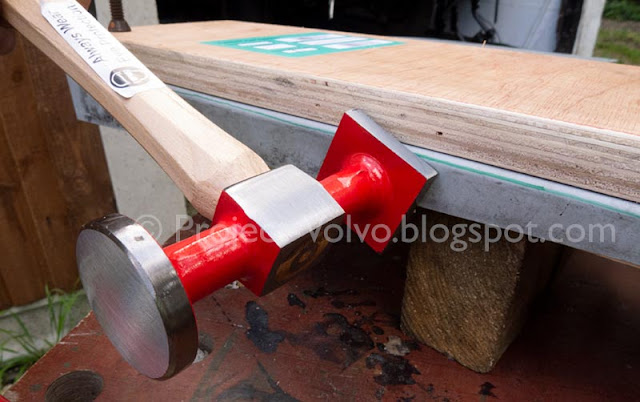Following my concerns about the 20 gauge Zinctec and its suitability for the boot floor fabrication, I did a little homework. Firstly I looked at the pre-pressed sections that I had bought and I measured for thickness using a micrometer. I also measured thickness of the original rear panel. Both appeared to be more than 0.9mm (20 gauge), although no where near as thick as 1.2mm (18 gauge). I estimated them to be approximately 1mm thick.
I then measured the thickness of the Zinctec sheet and discovered that although nominally 0.9mm, it wasn't difficult to find areas which were only 0.8mm, and some even as thin as 0.75. This confirmed my suspicions that this 20 gauge was not the right material for this job.
Further research suggested that the Volvo Amazon, like many older cars it seems, was in probably originally pressed in 19 gauge (1mm). I have now ordered a sheet of 1mm cold rolled mild steel (I could only find Zinctec in either 0.9 or 1.2).
Given that I already had the section cut from the 20 gauge clamped in the form, I decide to treat it as a practice piece.
I began my hammer forming by tapping the edge over gently using a rubber mallet, systematically working back and forth along the length, to avoid stretching the fold and creating ripples in the metal.
This worked, but it didn't do the mallet a lot of good and it left some of the rubber marks on the steel. A better option might have been a hide mallet.
Once the initial fold was established I switched to a plastic bossing mallet, using the same gradual technique to complete the fold to 90°.
I am thinking now that this was probably not the best tool at this point. Maybe a flatter faced plastic hammer would have been more appropriate. Like I say, I am not claiming to be an expert.
I then moved onto a metal panel hammer to sharpen and plannish the fold.
Here is the finished formed edge.
Not looking too shabby, I think. Using the form certainly works to prevent the main area of the panel from distorting as the lip is hammered over. Of course the lip would need to be cut to a uniform depth, but as this is only to be a test piece, I haven't bothered. What I did do however, is offer it up and check the fit to the rear panel: close, but no cigar. The curve is slightly too pronounced. I went back to my original template, developed a more accurate thin card version and stuck to the bottom piece of the form with some spray mount. I then gradually refined the curved edge of the form, again using a surform file.
So now its just a case of waiting for the new metal to arrive. In the mean time I think I might have a look at how to get the headliner out.







Comments
Post a Comment